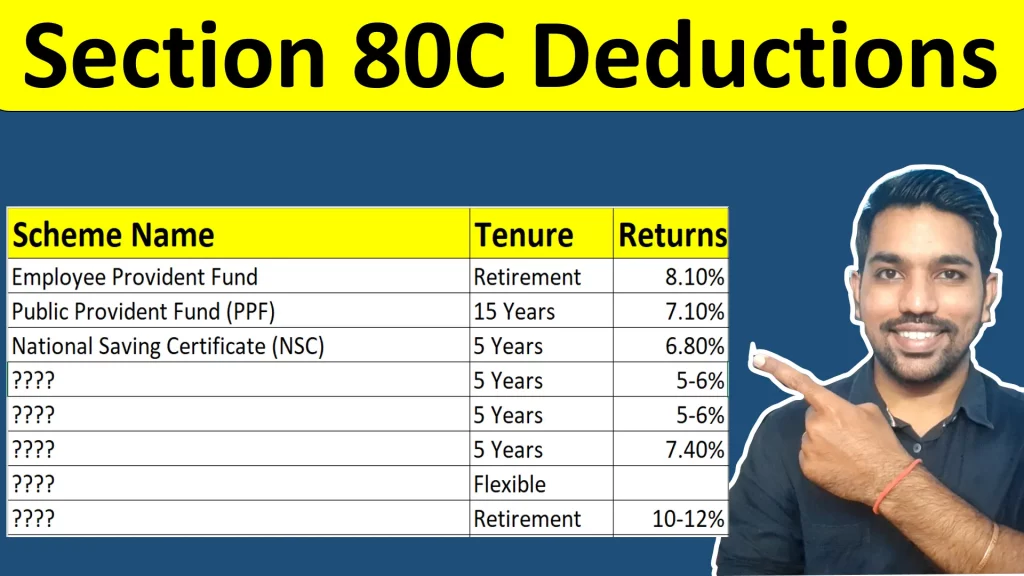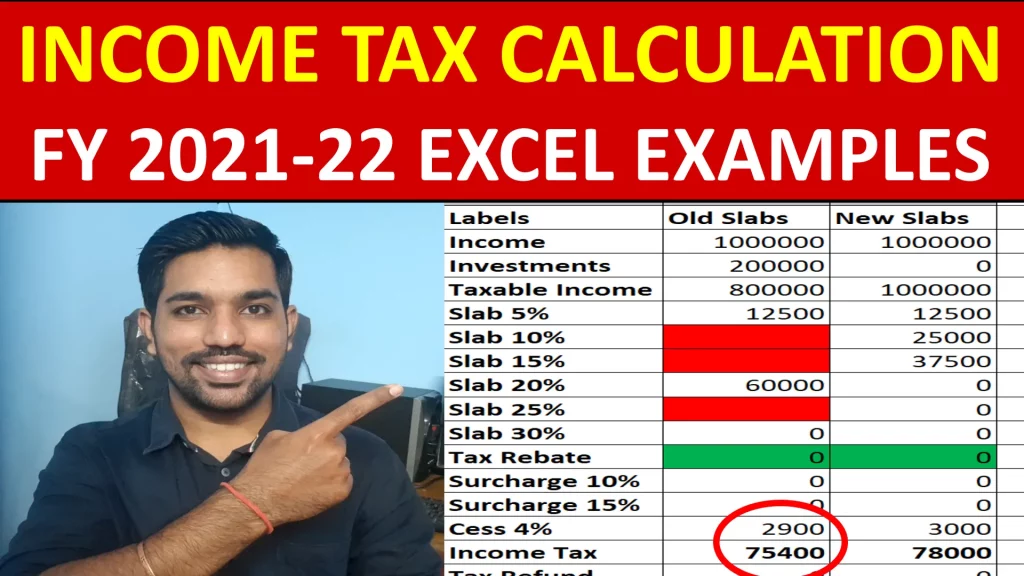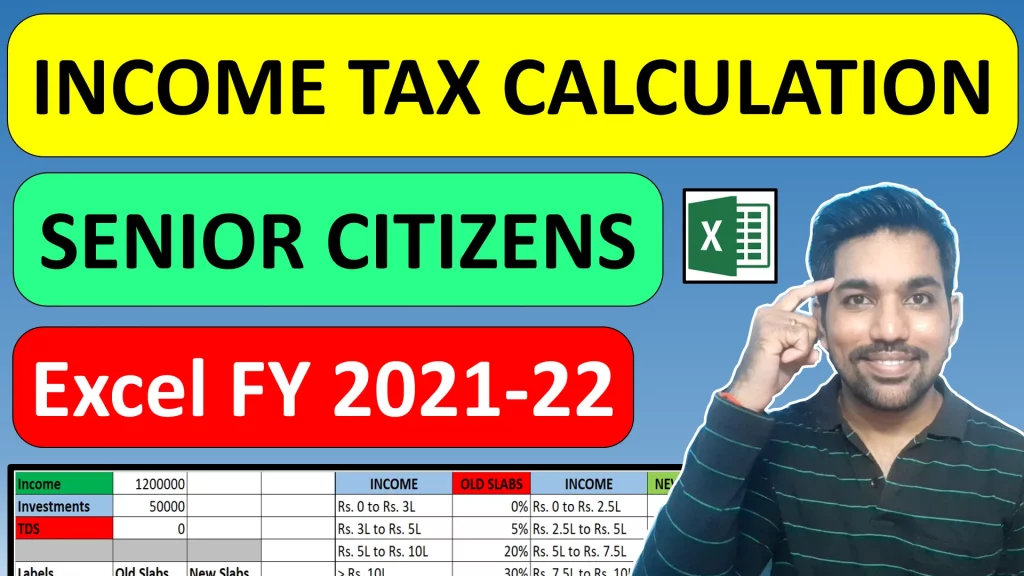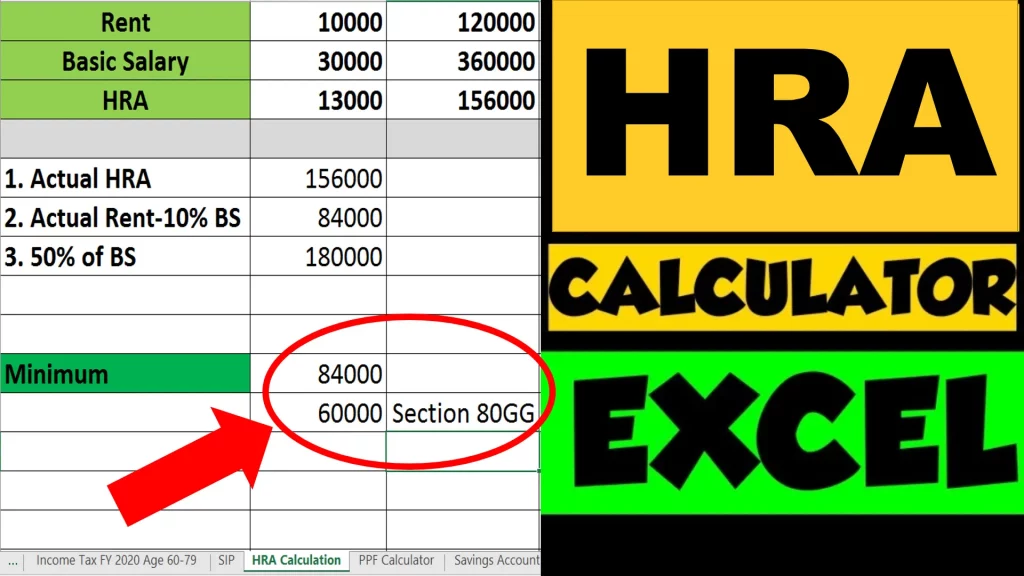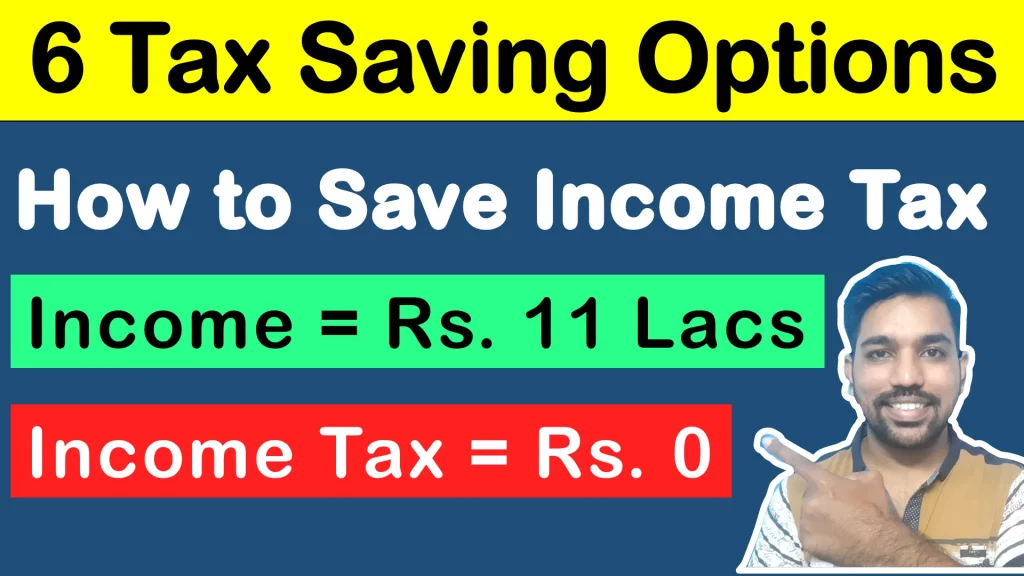Section 80C Deductions include most important and popular schemes used to save income tax with the help of Old Tax Regime. Please note that you cannot claim Section 80C Deductions under new tax regime.
Below are important points about Section 80C Deduction Schemes:
- Applicable only under Old Tax Regime
- Maximum limit of Rs. 1.5 Lacs can be claimed under Section 80C
- Includes combination of investment and spending options
- Can be used by salaried employees and businessman
- Section 80C Deductions List Table
- Section 80C Deductions List Video
- Employee Provident Fund (EPF)
- Public Provident Fund (PPF)
- National Saving Certificate (NSC)
- Tax Saving 5 years Fixed Deposits (FD)
- Senior Citizen Saving Scheme (SCSS)
- Life Insurance Premium (Term / ULIP)
- National Pension Scheme (NPS) (80CCD1B)
- Equity Linked Savings Scheme (ELSS)
- Tuition fee for 2 children
- Stamp duty and registration cost of the House
- Home Loan Principal Payment
- Sukanya Samriddhi Yojana
- Conclusion
- SHOW your Support!
- Income Tax Calculator App – FinCalC
Section 80C Deductions List Table
| Scheme Name | Tenure | Returns |
|---|---|---|
| Employee Provident Fund | Retirement | 8.25% |
| Public Provident Fund (PPF) | 15 Years | 7.10% |
| National Saving Certificate (NSC) | 5 Years | 7.70% |
| Tax Saving 5 years FD from Banks | 5 Years | 7.5% |
| 5 years Post Office Time Deposit (POTD) | 5 Years | 7.5% |
| Senior Citizen Saving Scheme (SCSS) | 5 Years | 8.2% |
| Life Insurance Premium (Term / ULIP) | Flexible | 8-10% |
| National Pension Scheme (NPS) (80CCD1B) | Retirement | 10-12% |
| Equity Linked Savings Scheme (ELSS) | 3 Years | 10-12% |
| Tuition fees for 2 children | NA | NA |
| Stamp duty and registration cost of the House | NA | NA |
| Home Loan Principal Payment | Flexible | NA |
| Sukanya Samriddhi Yojana | 21 Years | 8.20% |
Section 80C Deductions List Video

Watch more Videos on YouTube Channel
Schemes mentioned in above video and below are the ones that will help you to save income tax using most popular schemes under Section 80C.
Section 80C is one of the sections that provides maximum deduction limit. We have other sections as well such as Section 80D, Section 80CCD, Section 24, etc. that will help you to save income tax.
You can find all such Section 80 deduction schemes here.
Let us check all Section 80C schemes in detail.
Employee Provident Fund (EPF)
EPF or Employee Provident fund is the scheme available for salaried employees working in an organization, which is used for their retirement purpose.
Below are important points related to EPF:
- Every month, 12% of Basic Salary + DA (Dearness Allowance) is contributed by employee and employer separately, and is credited to the EPF account of Employee.
- Currently, interest rate in EPF is 8.15% annually, which is subject to change every year
- Interest is compounded yearly in EPF account
- Check this article on EPF interest calculation using Excel and more details on EPF
- It is important to note that out of 12% contribution by employer, 3.67% goes to EPF and remaining 8.33% goes to EPS account.
- You can check the EPF and EPS passbook and balance here in this video.
- Maximum amount that can be claimed as deduction with EPF is Rs. 1.5 Lacs in a financial year
Public Provident Fund (PPF)
PPF is another popular option to save for long term goals, retirement and to save income tax under Section 80C.
Below are important points related to PPF:
- PPF is a Government backed saving scheme, with the lock-in period of 15 years
- You can extend the account with the block of 5 years.
- The more time you give to your money in PPF Account, more compounding benefits you’ll get over long term
- You can accumulate total of Rs. 1 crore in 25 years and Rs. 1.49 crore in 30 years if you consistently deposit maximum amount allowed in your PPF account every Financial year.
- The current interest rate in PPF is 7.1% annually
- PPF falls under EEE Category – Principal, Interest and maturity amounts are exempted from income tax
- The deposits you make in PPF can be used to claim deductions under section 80C (maximum Rs. 1.5 Lacs)
- PPF account can be opened in any nationalized bank or post office
- Here’s the article on how to get maximum interest in PPF
PPF Interest with Maturity Amounts over long term:

You can also use below PPF calculator to calculate yearly interest in PPF:

Watch below video on Rs. 1000 PPF Interest Calculation for 15 Years:

National Saving Certificate (NSC)
NSC is another popular scheme which can be opened in post office.
Below are important points related to NSC:
- NSC full form is National Saving Certificate
- It has a lock in period of 5 years
- These are certificates issued by post office and the maturity amount is credited ones the certificate completes the tenure of 5 years
- Current interest rate in NSC is 7.7% annually
- The interest is compounded annually in NSC, similar to PPF account
- You can claim maximum deduction of Rs. 1.5 Lacs with NSC under Section 80C
- Read more about National Saving Certificate (NSC)
Tax Saving 5 years Fixed Deposits (FD)
- This is special type of FD or Fixed deposits or term deposits, with tenure of 5 years.
- Interest rate can range between 5% to 7.5% annually.
- You can use this FD calculator to calculate interest in fixed deposits
- Claim maximum of Rs. 1.5 Lacs in FY under Section 80C to save income tax
Also you can read this article to know how interest is calculated in Fixed Deposits.
Love Reading Books? Here are some of the Best Books you can Read: (WITH LINKS)
Senior Citizen Saving Scheme (SCSS)
- This scheme is for our senior citizens
- If you are above 60 years of age, you can invest in SCSS, that is Senior citizen saving scheme and get good interest amount
- Current interest rate in SCSS is 8.2% annually
- SCSS has lock in period (tenure) of 5 years
- Watch this video about SCSS Interest Calculation
- Claim maximum of Rs. 1.5 Lacs in FY under Section 80C to save income tax
Life Insurance Premium (Term / ULIP)
The Life Insurance premiums that you pay can also be used as deduction to save income tax.
Insurance can belong to term insurance or ULIP (Unit linked Insurance Product).
Term insurance does not give any benefits of returns but the premiums are comparatively low compared to ULIP that are linked to markets and give returns based on market returns.
You can claim up to Rs. 1.5 Lacs in FY as deduction under section 80C if you pay insurance premiums.
Please note that this applies only to life insurance and not medical or any other insurance.
National Pension Scheme (NPS) (80CCD1B)
In addition to schemes mentioned above under section 80C, we also have a sub-section called Section 80CCD(1B). This gives you additional benefit of Rs. 50,000 apart from Section 80C limit of Rs. 1.5 Lacs.
- NPS full form is National Pension Scheme
- This scheme is basically to save for your retirement
- When you turn 60, you can withdraw from this scheme during your retirement
- The returns are related to markets so you can get anywhere between 10%-15% average returns every year
What is NPS & How it Works Video

How to invest in NPS online Video

Equity Linked Savings Scheme (ELSS)
- ELSS or Equity Linked Saving Scheme is a type of mutual fund with lock in period of 3 years
- You can also invest via SIP (Systematic Investment Plan) and claim deductions under Section 80C
- While you invest via SIP, please note that every deposit is locked in for next 3 years
- You can get returns anywhere between 10% to 15% since ELSS is linked to market returns
- It is recommended to keep your money invest for more than 3 years to get better returns in mutual funds over long term
- Watch videos related to mutual funds for beginners here.
Tuition fee for 2 children
- In case your children go to tuition and you pay tuition fees, you can claim tax benefits under section 80C
- This is the type of deduction that belongs to your spending
- You can claim deduction for maximum of 2 children
Stamp duty and registration cost of the House
- When you buy a house or flat, you pay for stamp duty and registration
- This cost is usually 5% to 6% of the cost of house or flat
- So this amount that you pay as stamp duty and registration to government can be claimed as section 80C deductions, with limit of Rs. 1.5 Lacs
- Read more about Home Loan Calculations
Home Loan Principal Payment
- Apart from stamp duty and registration mentioned above, you also get section 80C deductions benefit on home loan you take to buy new home or flat
- Your Home Loan EMI consists of 2 components : Principal & Interest Amounts
- Principal amount can be claimed as deduction under section 80C with limit of Rs. 1.5 Lacs in FY
- The interest portion can be claimed under section 24, maximum limit of Rs. 2 Lacs in FY
Income Tax Benefits on Home Loan Video

Read more about Home loan EMI calculation here.
Sukanya Samriddhi Yojana
- This scheme is specially for your girl child
- You save for your girl child until she turns 21 years
- The amount you contribute in Sukanya Samriddhi Yojana belongs to section 80C deductions
- Maximum of Rs. 1.5 Lacs can be claimed in FY
- Sukanya Samriddhi Yojana provides the maximum interest rate of 8.2% compared to other government backed schemes
- Watch Sukanya Samriddhi Yojana Interest calculation here
Conclusion
So we have discussed maximum of the schemes that belong to section 80C deductions. It is very important to note that the limit under section 80C is Rs. 1.5 Lacs in a financial year and these deductions can be claimed only with Old Tax Regime.
New Tax Regime does not allow any deductions to be claimed, so make sure you choose Old Tax Regime to claim section 80C deductions.
And whether you should choose Old Tax Regime or New Tax Regime, depends on your income level and investments. Watch this video to decide between Old and New Tax Regime.
After you choose tax regime in FY, it is important to know how to calculate your taxable income on which income tax is calculated. With Old Tax regime, your taxable income will be less compared to gross income but with new tax regime, taxable income will be equal to gross income since no deductions are allowed in new tax regime.
Some more Reading:
Save Home Loan Interest Amount!
Use Home Loan Excel Calculator that will help you to Save Interest Amount on Home Loan EMI.
Click below button to download Home Loan EMI and Prepayment Calculator in Excel:
Watch how Home Loan Calculator in Excel Works
Income Tax Calculator App – FinCalC
For Income Tax Calculation on your mobile device, you can Download my Android App “FinCalC” which I have developed for you to make your income tax calculation easy.
What you can do with this mobile App?
- Calculate Income Tax for FY 2025-26 and previous FY 2024-25
- Enter estimated Investments to check income tax with Old and New Tax Regime
- Save income tax details and track regularly
- Know how much to invest more to save income tax
- More calculators including PPF, SIP returns, Savings account interest and lot more
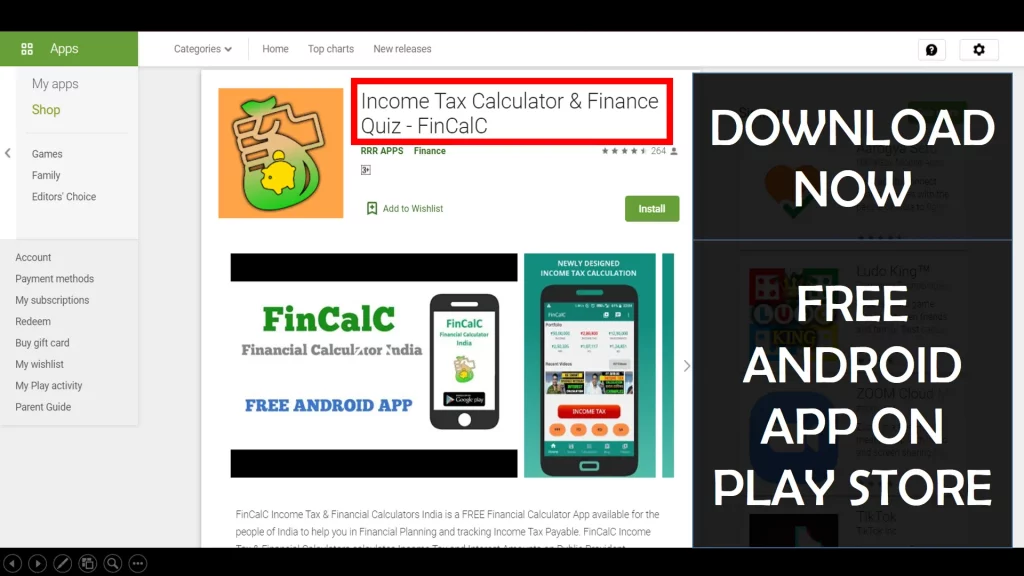
Use Popular Calculators:
- Income Tax Calculator
- Home Loan EMI Calculator
- SIP Calculator
- PPF Calculator
- HRA Calculator
- Step up SIP Calculator
- Savings Account Interest Calculator
- Lump sum Calculator
- FD Calculator
- RD Calculator
- Car Loan EMI Calculator
- Bike Loan EMI Calculator
- Sukanya Samriddhi Calculator
- Provident Fund Calculator
- Senior Citizen Savings Calculator
- NSC Calculator
- Monthly Income Scheme Calculator
- Mahila Samman Savings Calculator
- Systematic Withdrawal Calculator
- CAGR Calculator
I’d love to hear from you if you have any queries about Personal Finance and Money Management.
JOIN Telegram Group and stay updated with latest Personal Finance News and Topics.
Download our Free Android App – FinCalC to Calculate Income Tax and Interest on various small Saving Schemes in India including PPF, NSC, SIP and lot more.
Follow the Blog and Subscribe to YouTube Channel to stay updated about Personal Finance and Money Management topics.

